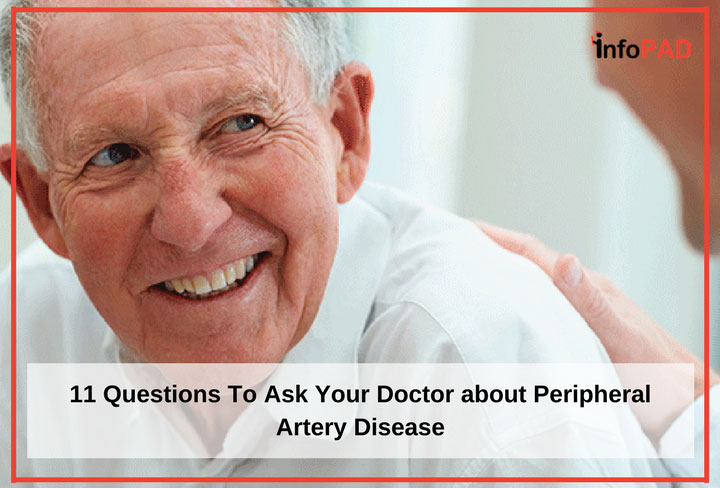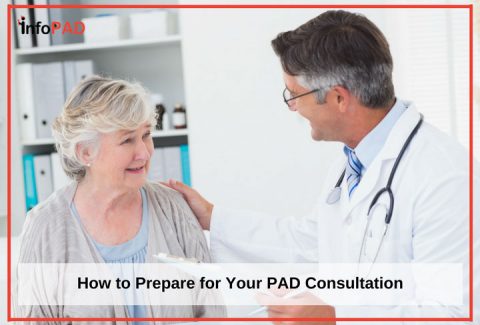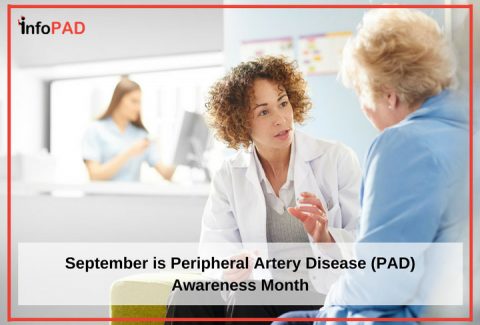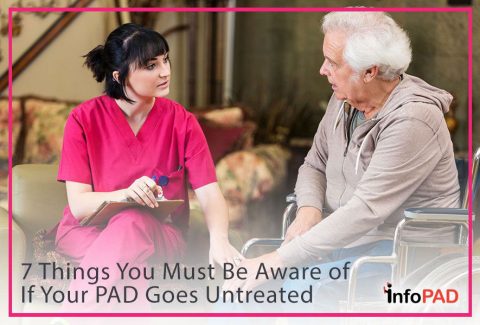
Peripheral artery disease (PAD) is a serious condition that can affect your ability to manage your daily routine. If you’re experiencing severe leg pain, numbness, and tingling sensations in your fingers, ankles and feet, and you have been recently diagnosed with PAD, you need to speak with your physician as soon as possible to get some much-needed answers and treatment for your condition.
RELATED: 4 Reasons You Need too See a Doctor if You Are At Risk for PAD
We’ve provided a convenient list of the eleven most important questions to ask your physician during your initial consultation visit. Discussing these issues at length with your doctor will provide you with a comprehensive overview and understanding of the disease and, perhaps most importantly, give you a sense of where to go from here.
11 Questions to Ask Your Doctor about PAD
1. What is PAD?
Peripheral artery disease is a build-up of plaque in the arteries that can reduce circulation and cause serious issues for affected patients. Some of the most common risk factors for PAD are unhealthy dietary habits, smoking, high cholesterol, high blood pressure, obesity, diabetes and advanced age.
2. How common is PAD?
According to the Centers for Disease Control and Prevention, about 8 million people in the US suffer from PAD. The disease may affect as many as 20 percent of individuals over the age of 60. In general, older individuals are at greater risk for developing PAD and other circulatory diseases.
3. Do I have PAD?
People with PAD often experience painful cramps in their hips, calves or thighs during physical exertion. This pain typically lessens or is completely alleviated with rest. They may also have numbness, weakness or a cold feeling in their legs or feet. Sores that will not heal on the ankles, legs or feet are another common symptom of advanced PAD. Be sure to let your doctor know immediately if you’re experiencing any of these symptoms or if your symptoms begin to worsen.
4. Is my quality of life going to be affected?
By focusing on a healthy lifestyle and making moderate changes to your diet and exercise routine, you may be able to keep PAD from getting worse. If you are diagnosed with PAD, managing the pain daily is going to be your biggest challenge until you are treated. Be sure to pay attention to your legs and feet, as even the smallest cut, bump, or scrape may have lasting and detrimental effects.
5. Should I be concerned about amputation?
In some severe cases, amputation may be necessary. However, many times you can undergo alternative surgery and save your limb. Early intervention is critical and can help avoid the life-altering possibility of limb amputation.
6. Can I reduce or reverse my risk for developing PAD?
Staying active and maintaining a healthy weight can lower your risk for diabetes, heart disease and PAD. This can be true even if you have a family history of PAD or if you have experienced health problems in the past. Smoking cessation therapy is also highly recommended for those at risk for developing PAD.
7. What could happen if I don’t seek treatment for PAD?
In some cases, patients with PAD have suffered strokes, heart attacks and even serious infections due to the blockages caused by plaque in their arteries. These conditions can lead to the loss of limbs or even death.
8. Is there a cure for PAD?
There is no cure, but modern medical treatments can provide real relief and slow the progression of the disease. These PAD treatments include lifestyle changes, prescription medications, minimally invasive surgical procedures, and traditional open surgery solutions.
9. What prescription treatments are available?
Depending on the factors that caused your PAD, you may be prescribed medication to lower your cholesterol or blood pressure. If you have diabetes, it’s crucial that you keep your blood sugar levels under control. By using your prescribed medication, you will be more comfortable and continue to be more mobile while living with PAD.
10. Will I need surgery?
Only your doctor can determine if a surgical treatment would be the best choice in your case. Bypass surgery is the most common surgical procedure used to treat severe cases of plaque build-up in the arteries.
11. Are there any alternative treatments to surgery?
Surgery isn’t the only option for patients suffering from PAD. There are also minimally invasive procedures to consider. Angioplasty is a procedure where a small catheter is placed into an artery then expanded to create a larger channel for blood flow. A catheter is also used for atherectomy, but in this case a tiny blade rotates to clear the plaque and open the blockage. Stenting is another non-surgical option in which small metal tubes are placed in the arteries to hold them open.
RELATED: How to Prepare for Your PAD Consultation
After a PAD diagnosis comes the daunting task of choosing the right treatment for you and your family. Your doctor is your best source of information for this serious health condition. He or she can provide you with a treatment plan specifically designed to meet your needs and get you back on your feet, living the best life you can.


